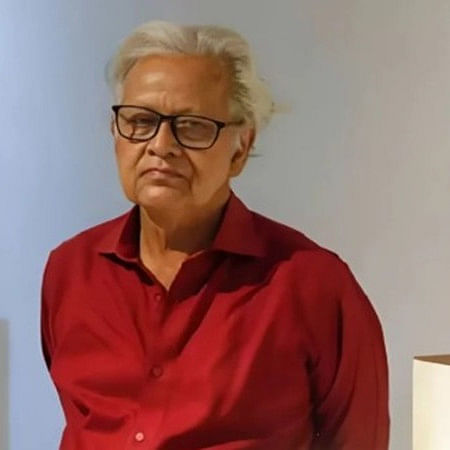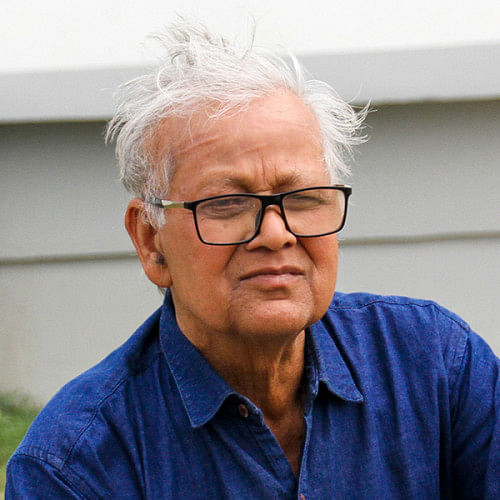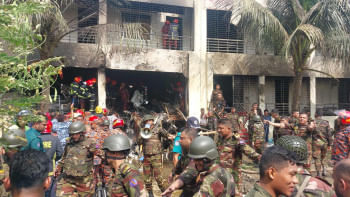Liberation War sculptor Hamiduzzaman Khan passes away

Renowned sculptor and painter Hamiduzzaman Khan, whose work etched the spirit of Bangladesh's Liberation War into the nation's public memory, has died. He was 79.
He passed away at 10:07am today while receiving treatment at Dhaka's United Hospital, his wife, painter Ivy Zaman, confirmed.

Hamiduzzaman had been admitted on July 15 and remained in intensive care for three days, battling a severe case of dengue and pneumonia. A medical board was overseeing his treatment, and doctors had initially been hopeful.
"The doctors have informed us that his heart and kidneys are in good condition. We are hopeful that once the pneumonia is under control, he will be moved from the ICU to a regular bed," Ivy had said at the time to bdnews24.com.
But despite medical efforts, he could not be saved.

Plans are underway to bring his body to Dhaka University's Faculty of Fine Arts, his alma mater and longtime professional home. "We are in contact with his family. The time for bringing him to the faculty has not been finalised yet. Once the family informs us, we will notify everyone," said Professor Azharul Islam, dean of the Faculty.
Born on March 16, 1946, in Sahashram village of Kishoreganj, Hamiduzzaman graduated in 1967 from the then Bangladesh College of Arts and Crafts, now the Faculty of Fine Arts. He joined the institution as a teacher in 1970, nurturing generations of artists while developing a vast body of work across sculpture, watercolour, oil, acrylic, and ink.

Notably, it is his monumental public sculptures that immortalised him.
Deeply influenced by the 1971 war, Hamiduzzaman's works stand across the country as testaments to courage, resistance, and remembrance.
Among them, "Jagrotobangla" at the Fertiliser Factory in Ashuganj, "Sangsaptak" at Jahangirnagar University, and "Bijoy Keton" at Dhaka Cantonment are among his most iconic. His other notable pieces include "Unity" at Bangladesh Bank in Motijheel, "Freedom" at the Krishibid Institution Bangladesh, "Swadhinata Chironton" at Bangladesh Open University, "Mrityunjayee" at the Public Service Commission, and "Ebarer Sangram Muktir Sangram" in Madaripur.

Each of these works carries the weight of history—rendering sacrifice, defiance, and national spirit in steel, bronze, and stone.
Hamiduzzaman held 47 solo exhibitions throughout his prolific career and earned some of the country's highest recognitions. In 2006, he was awarded the Ekushey Padak for his contributions to the arts. In 2022, he was elected a Fellow of the Bangla Academy.
Beyond formal accolades, his legacy lies in shaping how a nation sees itself.

 For all latest news, follow The Daily Star's Google News channel.
For all latest news, follow The Daily Star's Google News channel. 





Comments